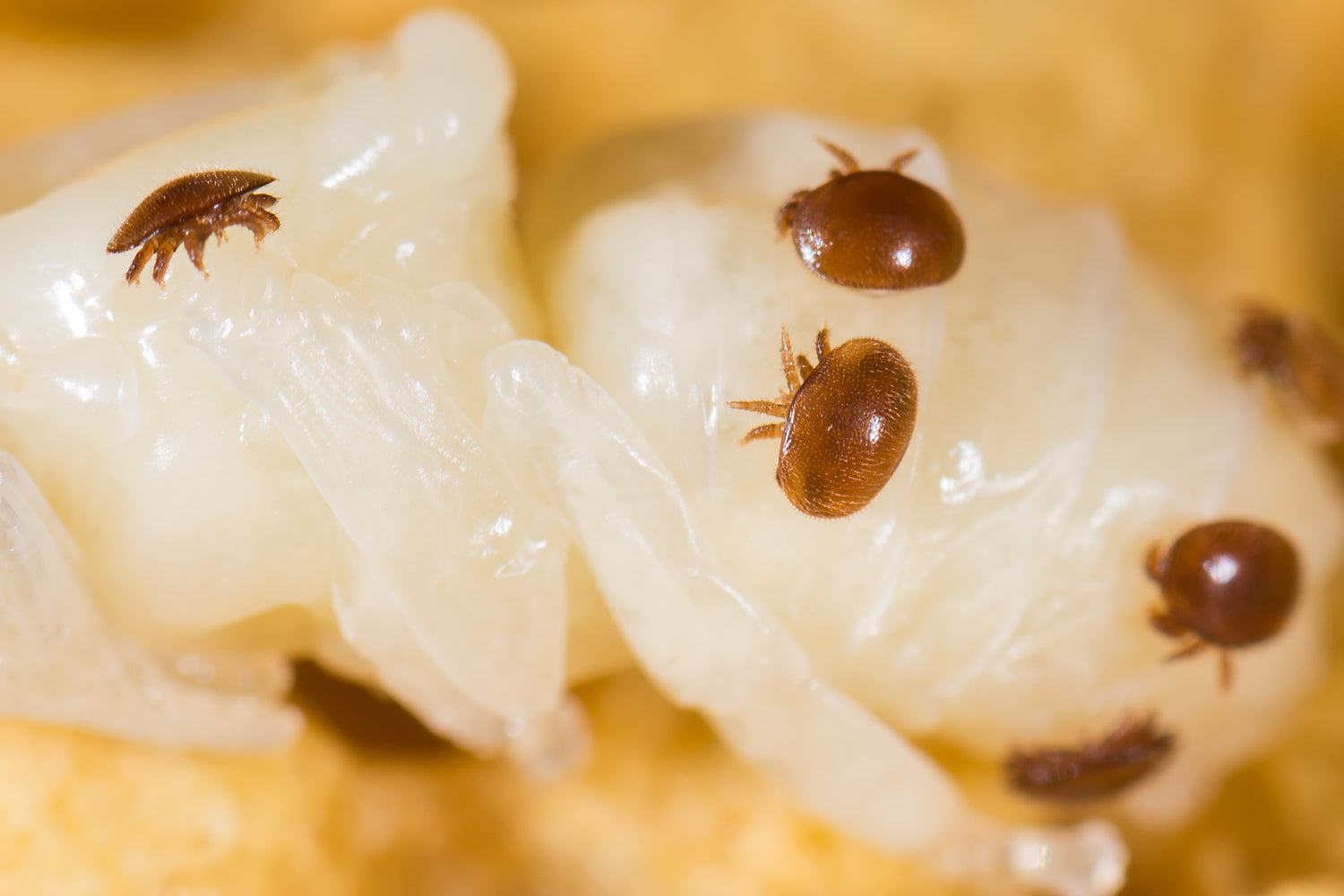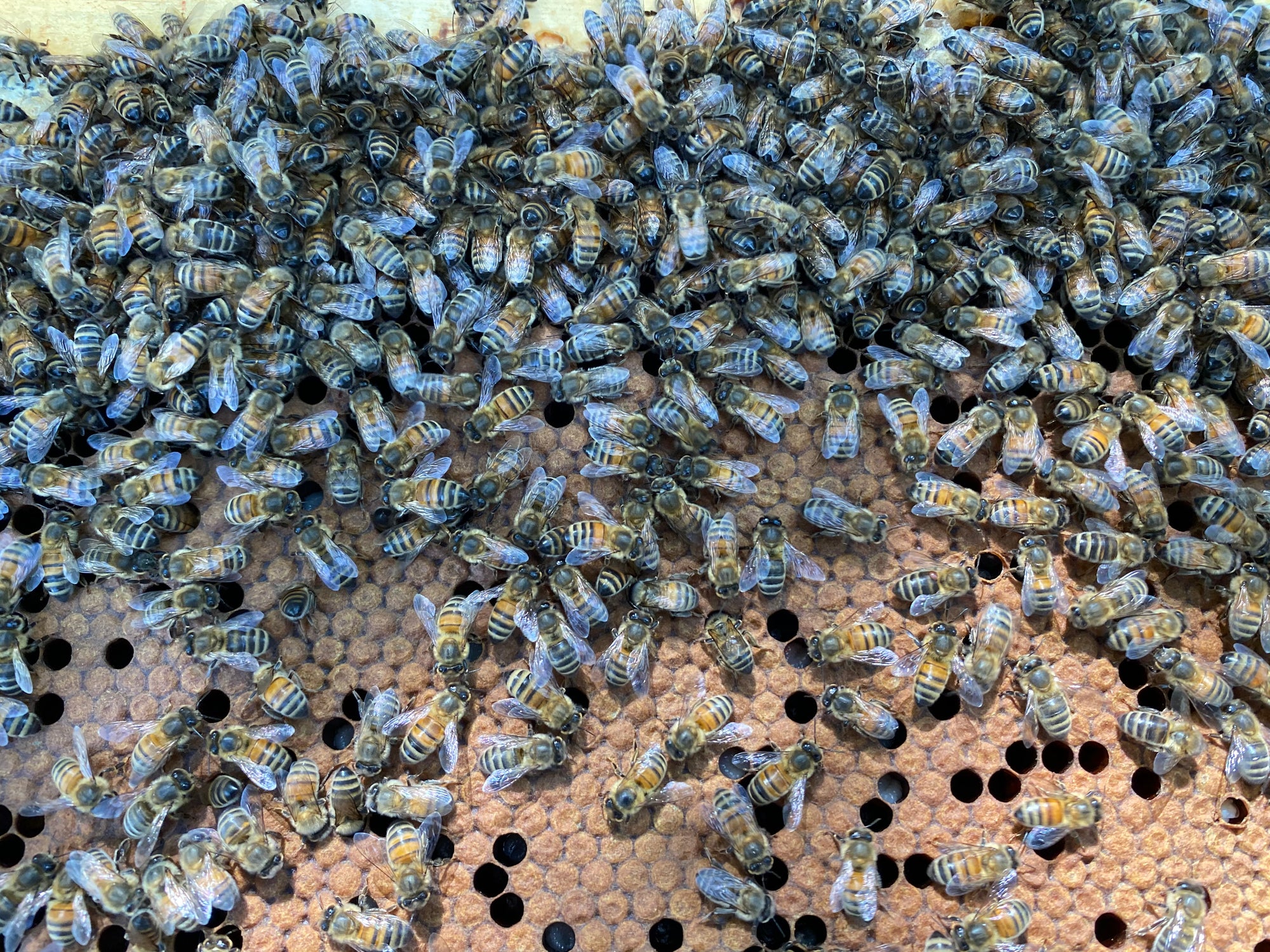Why use Varroa mite treatments?
Varroa mite (Varroa destructor) infestations within a hive can harm a bee colony. Varroa infestation results in smaller and weaker bees unable to work as hard with shorter lifespans, which puts stress on a bee colony and is considered as a contributing factor towards the risk of colony collapse.
- Support healthy and productive colony
- Reduce disease transmission within a hive
- Increase colony survival
Any varroacide product used as a treatment against Varroa should be used as part of a combined Integrated Pest Management (IPM) strategy alongside good husbandry, hygiene and physical measures and not relied upon as the single solution.
When to use Varroa mite treatments?
There is no single ideal time for treatment with varroacides. The optimum time for treatment will be determined by factors such as beekeeping practice, health of the colony and varroa population. Treatments should be carried out as a result of varroa monitoring (e.g. mite fall) passing an action threshold. The best controls result from using a combination of methods at different times of the year depending on the level of infestation.
However, for most beekeepers the main treatment time is late summer to early autumn – between harvesting honey and preparing colonies for winter. At this time colony size will be reducing while infestation will be continuing to increase. The aim of treatment is to significantly reduce the mite population, thus protecting the last few brood cycles that produce the young bees needed for successful colony survival over winter.
Which Varroa mite treatment to use?
The best suited product will depend on the time of year treatment is to be made.
Spring: Oxuvar (liquid Oxalic acid) spray to reduce the varroa infestation before the honey frames are mounted.
Summer/Early Autumn: After the honey harvest the prolonged gradual release period of Thymovar (Thymol) provides extended treatment period to ensure maximum number of open brood cells receive a treatment. This is the most common treatment period for UK beekeepers.
Late Autumn/Winter: Oxuvar (liquid Oxalic acid) trickle application to brood-less colony to reduce adult varroa population riding on bees through the winter.
Winter: Oxalic acid dihydrate crystals can be vaporised with Varrox vaporizer .
Under UK law, veterinary medicinal products must be authorised before they may be marketed or administered to honeybee colonies. Authorisation requires a thorough scientific assessment of data to show that the product meets statutory levels of quality, efficacy and safety (to the user, bees, consumers of bee products and the environment). Details of products approved for use in the UK can be found on the Veterinary Medicines Directorate (VMD).

How to use Thymovar
What is it: Foam strips containing 15g of crystallised thymol.
When to use it: Summer/early autumn directly after honey harvest.
How to use it: (click here to watch our demonstration video)
- Remove honey frames for harvest.
- Provide the bee colony with enough food for 4 weeks to cover the treatment period.
- Arrange Thymovar strips according to the type of hive being used and size of the colony.
- Remove the Thymovar strips after 3-4 weeks.
- After a pause of 1 week to allow food to be replenished, repeat the above for the second treatment.

Why use Thymovar:
- Thymol in crystal form gives an advantage of more gradual release:
- causes minimal agitation to worker and queen bees.
- provides prolonged period of activity ensuring higher number of brood cells are open at some point during the treatment.
- Sponge carrier has a built-in matrix to prevent worker bees destruction and removal from the hive ensuring thymol remains in the hive where it is needed.
- Slim design placed directly onto brood bars means no need for additional structures to be added on top of the brood chamber to make space for their placement.
- No negative effects on plastic structures.

How to use Oxuvar for spray application
What is it: Liquid oxalic acid to be diluted with water and sprayed onto the colony.
When to use it: Spring/Summer to swarms, artificial swarms and brood-less colonies. Treatment provides a quick knock-down effect within two days. Oxuvar has a zero day with withholding period but should be applied without honey supers mounted.
How to use it: (click here to watch our demonstration video)
- Dilute 9 parts water to 10 parts Oxuvar. There is space within the supplied packaging to allow this.
- Decant solution into a hand-held trigger sprayer.
- Using a sprayer held at 45 degrees to the frame (to avoid spraying into open brood cells), spray as a light mist.
- Spray at a rate of 3-4 ml (4-5 sprays) to each side of the comb. Bees in a cluster should be sprayed with 20-25ml per kg of bees.
- Bees should not be dripping wet after application.
- Best results are seen when the bees remain within the hive for a few hours after treatment.
- Oxuvar as a spray treatment should not be applied more than twice on one generation of worker bees.

Why use Oxuvar spray application:
- Flexible early season treatment with quick knockdown.
- Treatment option for swarms.
- Pure formulation
- minimal agitation to bee colony.
- does not leave sticky residue, affect bee wings or glue hairs.
- Long shelf life even after diluting with water.
How to use Oxuvar trickle application:
What is it: Liquid oxalic acid to be diluted with sugar and trickled onto the colony.
When to use it: Late Autumn/Winter (November to January) to brood-less colonies.
How to use it: (click here to watch our demonstration video)
- Dilute 1 part Oxuvar to 1 part sugar. There is space within the supplied packaging to allow this. Mixing Oxuvar with sugar may need to be done in a water bath to help the sugar dissolve.
- Decant solution into a syringe.
- Trickle over the bees sitting between the combs.
- Consult the product label for the volume to be trickled for UK (Northern Europe) depending on hive type.
- Best results are achieved when the bees remain within the hive after treatment.

Why use Oxuvar trickle applications:
- Late season treatment to improve condition of colony going into winter.
- Sugar solution will remain active for longer than spray or vaporising treatments due to hydroscopic sugar attracting water and maintaining solution.
Benefits to the environment.
Managing varroa mites within bee colonies is an ongoing activity. Its continuous monitoring and action based on thresholds will support bee colony health and reduce its potential for transmission and spread between colonies. Maintaining healthy bee colonies provides important support for both wild and cultivated plant pollination.



